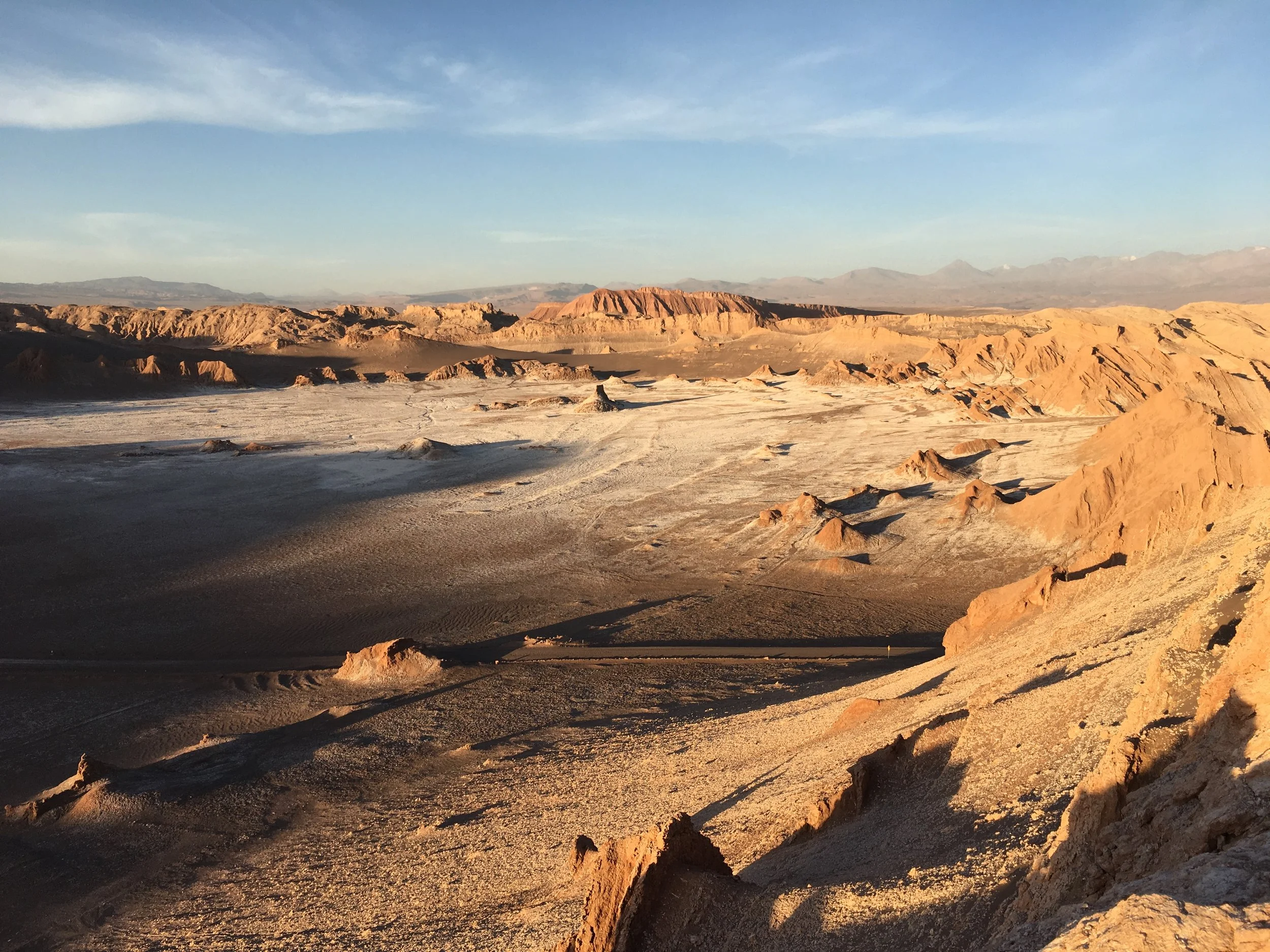Since we were in Chile, we couldn't miss to travel further north and visit the amazing Atacama Desert, one of the most arid places on Earth. This happens because of its location influenced by a high-pressure system further west on Pacific Ocean, by a drying effect from the cold north-flowing Peru–Chile current, and by a rain-shadow effect caused by the Andes intercepting precipitation from the East (e.g., Arroyo et al., 1988). Dust lifted from the Atacama Desert is known to be incorporated into higher air layers and carried by the SE trade winds over and into the Pacific Ocean (see Stuut et al., 2007), similarly to what we known for the Saharan desert and the Atlantic.
References:
Arroyo et al., 1988. Effects of aridity on plant diversity in the Northern Chilean Andes: results of a natural experiment. Annals of the Missouri Botanical Garden 75 (1), 55–78.
Stuut et al., 2007. Sources and modes of terrigenous sediment input to the Chilean continental slope. Quaternary International 161, 67–76.




